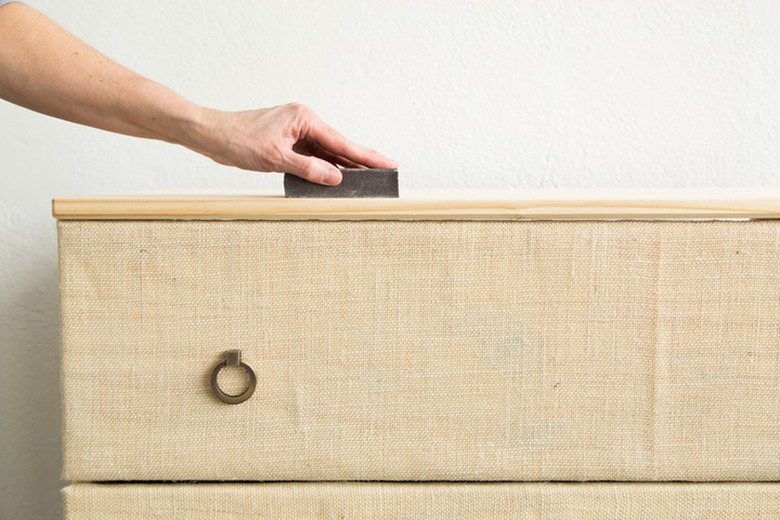How To Clean Unfinished Wood Before Staining
We may receive a commission on purchases made from links.
The actual act of staining wood isn't that complicated. The hardest part is preparing the wood. To prepare unfinished wood to be stained, you must properly sand it, remove the sanding dust, and "pop" the grain with water. You may also need to apply a wood conditioner.
Need to prep unfinished wood for staining? Here how to do it.
1. Sand the Wood
1. Sand the Wood
One of the most critical steps in preparing wood for staining is sanding. The wood must be smooth with no blemishes because stain highlights imperfections in the wood. Sometimes, boards are sold with waxy, protective coatings, and this must be entirely removed before staining, or your results may be splotchy.
Choosing the correct grit of sandpaper is essential in staining, as too fine a grit will prevent the wood from being able to take stain, whereas too rough a grit makes the wood absorb so much stain that it will become dark, almost black. Experts debate the ideal grit for each type of wood but agree that it varies depending on the wood species. In most cases, it's best to avoid using anything rougher than 100 grit or finer than 150 grit. For the majority of woods, 120 grit can ensure your wood will absorb enough stain but not too much. Here's how to sand the wood:
- Use an orbital sander with a 100-grit sanding disc or a 100-grit sanding block to remove any imperfections or wax coating.
- Ensure you
remove any waxy coating by sanding wood down to the point where it is no longer
shiny. - Go evenly over the entire surface and then clean the dust with a
vacuum or a tack cloth. - Go over the surface a second time with a 120-grit disc or sanding block to open the wood grain. Make sure you remove any marks from the 100-grit
sanding and if you are using an orbital sander, ensure you do not leave any
swirl marks since these will show up after you apply stain. - Remove all the dust
with a vacuum or a new tack cloth. The wood must be completely free from dust,
lint, hairs, or anything else that may get caught in the finish.
2. Pop the Grain
2. Pop the Grain
Applying a small amount of water can help the wood's pores to open so it can better absorb stain; this process is known as "popping the grain." By popping the grain, the stain will absorb more evenly and require fewer coats. Here's how to pop the grain:
- Wet a clean, lint-free cloth and wring it out enough so that it
is not dripping but still very moist, not just damp. - Go over the wood enough to
ensure the entire surface is wet but do not allow water to pool up. - Let the wood dry before applying the stain.
3. Apply Wood Conditioner
3. Apply Wood Conditioner
Not all woods require prestain conditioner, especially after popping the grain. You do not need to apply a conditioner if you are using gel stain. Some woods, such as pine and cherry, are hard to stain without getting blotchy results, so it is best to condition these if you are not using a gel stain. Applying prestain conditioner is easy. Just wipe it on and wait for it to soak in. Let the conditioner sit for 10 minutes before staining to ensure it soaks in and does not mix with the stain.
